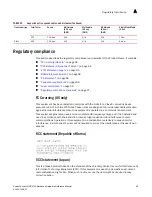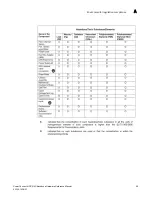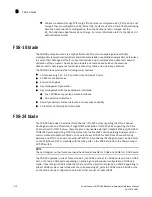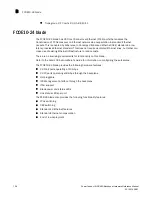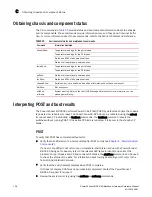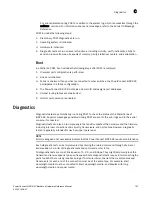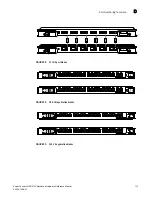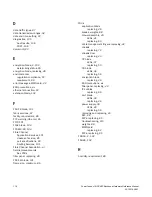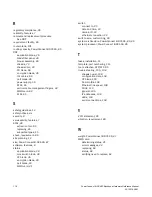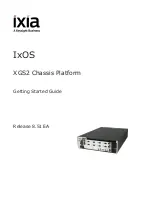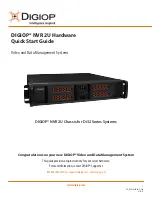
PowerConnect B-DCX-4S Backbone Hardware Reference Manual
107
53-1001808-01
Diagnostics
C
Any errors detected during POST are written to the system log, which is accessible through the
errShow command. For information about error messages, refer to the
Fabric OS Message
Reference
.
POST includes the following steps:
1. Preliminary POST diagnostics are run.
2. Operating system is initialized.
3. Hardware is initialized.
4. Diagnostic tests are run on several functions, including circuitry, port functionality, ability to
send and receive frames, all aspects of memory, parity, statistics counters, and serialization.
Boot
In addition to POST, boot includes the following steps after POST is complete:
1. Universal port configuration is performed.
2. Links are initialized.
3. Fabric is analyzed. If any ports are connected to other switches, the PowerConnect B-DCX-4S
participates in a fabric configuration.
4. The PowerConnect B-DCX-4S obtains a domain ID and assigns port addresses.
5. Unicast routing tables are constructed.
6. Normal port operation is enabled.
Diagnostics
Diagnostic tests are automatically run during POST to check the status of the PowerConnect
B-DCX-4S. Any error messages generated during POST are sent to the error logs and to the serial
console, if connected.
Diagnostic tests can also be run manually to test and troubleshoot the hardware and the firmware,
including internal connections and circuitry, transceivers, and port cables. However, diagnostic
tests are generally intended for use by support personnel.
NOTE
Error messages do not necessarily indicate that the PowerConnect B-DCX-4S requires maintenance.
Each diagnostic test can be implemented by entering the related command through a Telnet or
serial session. For a list of diagnostic tests and commands, refer to the
.
All diagnostic tests are run at link speeds of 1, 2, 4, and 8 Gbps. They might temporarily lock the
transmit and receive speeds to a specific speed. Some diagnostic tests require interconnecting the
ports to each other or using loopback plugs. If ports are interconnected, the media (cables and
transceivers) at each end of the connection must be of the same type. For example, short
wavelength media must be connected to short wavelength media, and likewise with long
wavelength media and copper media.



